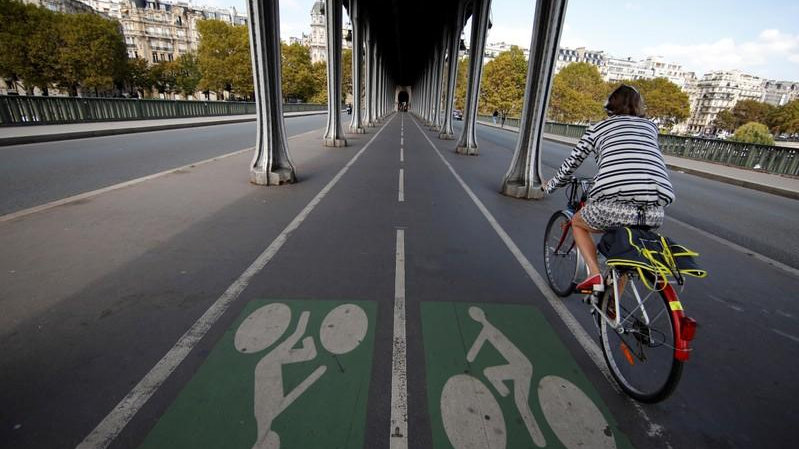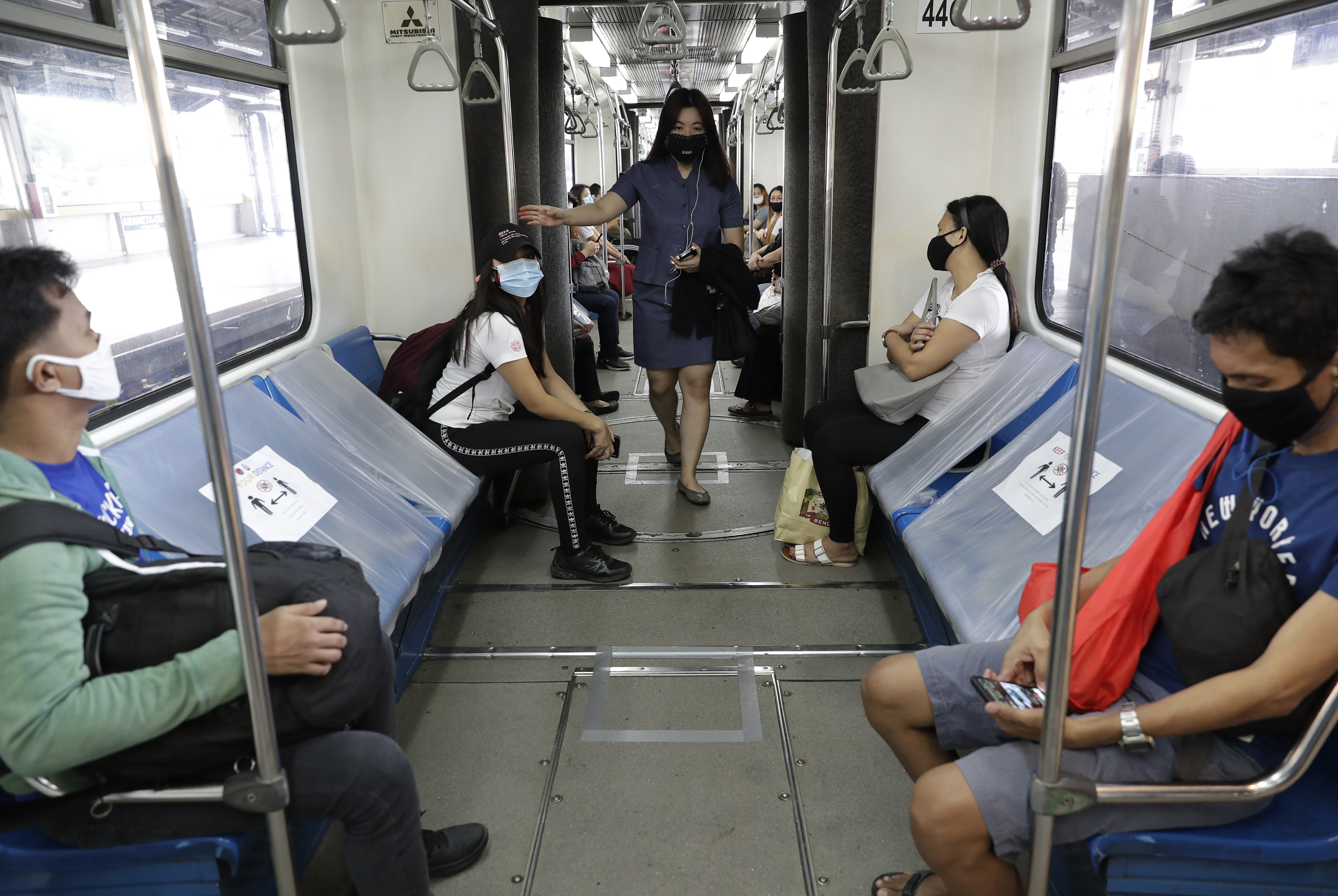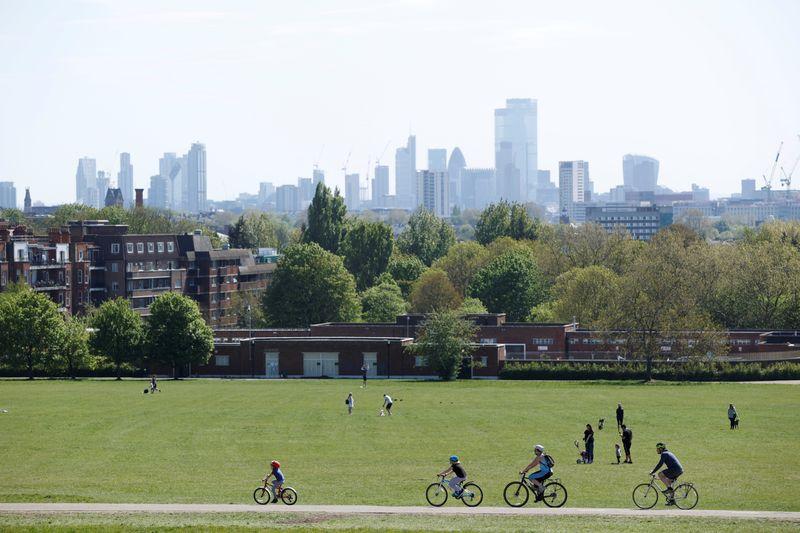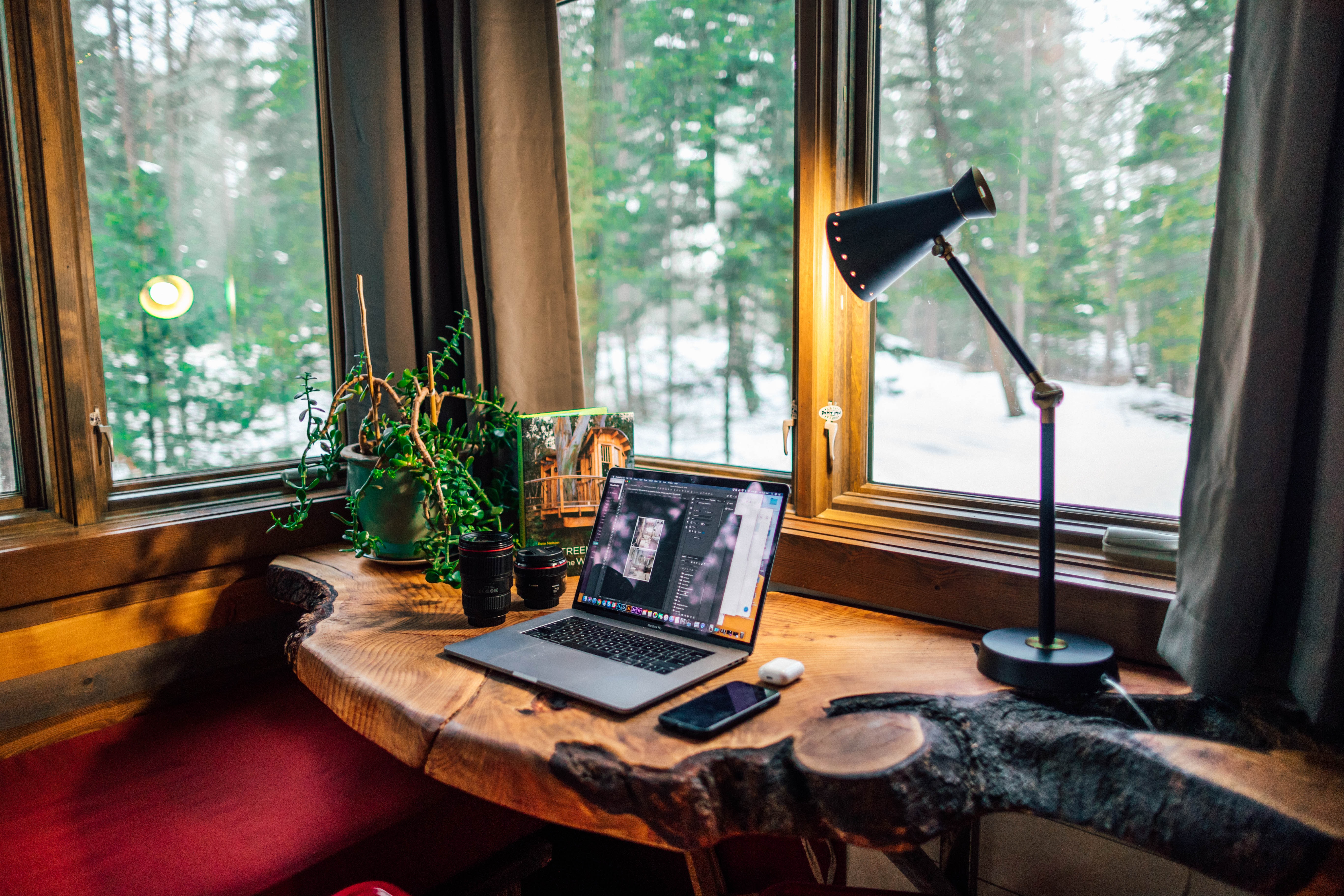
The novel coronavirus pandemic has brought the world to a standstill, and has given nature a breath of fresh air. Lockdowns around the world have seen air pollution falling to levels not seen in decades, as skies free of planes and roads with fewer cars as more work from home.
This could be the accelerator environmental activists have been looking for to create a greener way to live.
"There's a massive opportunity to make the leap towards more sustainable cities," said Tiina Kähö, head of the Helsinki Metropolitan Smart & Clean Foundation, a coalition of businesses, researchers and state officials. "I think now's really the greatest momentum for the climate actions to make the disruption that we've been waiting for."
But how exactly can cities create a new green normal?
Read more: 'Historic' drop in energy demand due to coronavirus pandemic
Towards greener and healthier transport
Carbon emissions in April 2020 plunged by 17 percent on year due to the pandemic, according to Nature, with under half attributed to surface transport. But this may not last long as some veer toward private cars post-lockdowns to avoid public transport since a vaccine is still months away
In China, where the outbreak is waning, vehicle sales are estimated to rise 11.7 percent on year in May – the second straight month of sales increase in about two years.
"Somehow, you have to make a balance between people using more bikes and walking and have public transportation in a safe way," said Kaho. "Otherwise people get afraid. And then they take the car and it's the easiest solution."

People board a train with seats arranged for social distancing measures to help curb the spread of the coronavirus during the first day of a more relaxed lockdown in Manila, Philippines on Monday, June 1, 2020. With a vaccine still months away, public transport is unlikely to operate at full capacity anytime soon. /AP
People board a train with seats arranged for social distancing measures to help curb the spread of the coronavirus during the first day of a more relaxed lockdown in Manila, Philippines on Monday, June 1, 2020. With a vaccine still months away, public transport is unlikely to operate at full capacity anytime soon. /AP
And some cities are looking to make biking and walking preferable and discouraging car use post-lockdown. In London, it's estimated cycling could increase ten-fold, according to its transport department.
Post-lockdown transportation plans include adding some 30 kilometers of permanent cycling lanes to the existing 160 kilometers. It also includes wider pedestrian walks and reducing speed limits in some neighborhoods.

Cyclists are seen on Parliament Hill, as the spread of the coronavirus disease (COVID-19) continues, London, Britain, April 19, 2020. /Reuters
Cyclists are seen on Parliament Hill, as the spread of the coronavirus disease (COVID-19) continues, London, Britain, April 19, 2020. /Reuters
"The capacity of our public transport will be dramatically reduced post-coronavirus as a result of the huge challenges we face around social distancing," said London Mayor Saqid Khan, and "creating temporary cycle lanes and closing roads to through traffic we will enable millions more people to change the way they get around our city."
Changing offices forever
As more than half the world was called to hunker down, the pandemic also kickstarted the world's greatest remote commuting experiment.
Some companies have already come up with a conclusion: working from home works, and employees can choose to do that permanently if they want to. This may very well give offices a facelift in years to come, and change the way businesses think about offices and the purpose they serve.
"It will definitely make businesses think about what is an office for and whether you need to have everybody together in a building for effective cooperation," said David Symons, Future Ready leader and director of Sustainability at WSP UK.
Kaho thinks offices will likely become meeting points, where employees can choose the hours they want to work from home or at the office.
Given that offices occupy some of the most prime real estate across the globe, she thinks some may shift towards offices with multiple users.
"You need to renew them in a completely new kind of business models, how you rent them, and the kind of users. In the evening some players are using the space and then during the day some others are... It's not going to be the way people go in and out and they go home to the office. It's not going to be like that," she elaborated.
Read more: COVID-19: What is the future of workplace?
Striking a green balance in working from home
But before jumping on the work from home bandwagon, governments and companies also need to consider if remote commuting is really the more environmentally friendly option.
Read more: Will the coronavirus pandemic make 'work from home' popular?

The novel coronavirus pandemic kickstarted the world's largest work-from-home experiment. And Twitter CEO Jack Dorsey has come up with a verdict: employees can now work from home indefinitely if they want to. /Unsplash
The novel coronavirus pandemic kickstarted the world's largest work-from-home experiment. And Twitter CEO Jack Dorsey has come up with a verdict: employees can now work from home indefinitely if they want to. /Unsplash
In WSP's research of 200 UK-based workers across different locations, remote commuting may be environmentally friendly in the summer, but less so in the winter, due to the need to heat individual workers' buildings versus one office building.
"If you work from an office, then you've got the commute, which is obvious as you're using fuel and energy for that commute. But over the course of a typical year, generally less on the commute than you are on heating, heating a house," explained Symons.
While office buildings may contribute significantly to greenhouse gases, they are usually more energy efficient compared to individual houses and are also better resourced.
For remote commuting to work, Symons said the best you can do is to maximize the number of people working in the same house or to only keep one room, instead of the whole house, heated.
Different countries with a different grid, commuting habits, and electricity use will also need to consider these factors. Take for example, Singapore, where it's warm year-round, it may make more sense for people to work in office rather than at home.
"If you go to very hot countries, actually the situation might be reversed and actually their energy, the energy consumption, at home is higher in the summer because you've got your air conditioning systems running," he explained.
Meanwhile, the coronavirus pandemic is showing signs of slowing worldwide. But it is unlikely business as usual or global travel will return anytime soon.
The months-long pause has shown companies and employees alike that there are ways to work without being in an office or traveling halfway across the world, and this could have a wide-ranging impact on city planning and the sharing economy.
"And when we go back to normal, we cannot go back to the old normal," said Kaho.
(Cover image: A woman rides a bicycle along a bike path on the Pont de Bir-Hakeim bridge in Paris, France, September 14, 2018. Reuters)